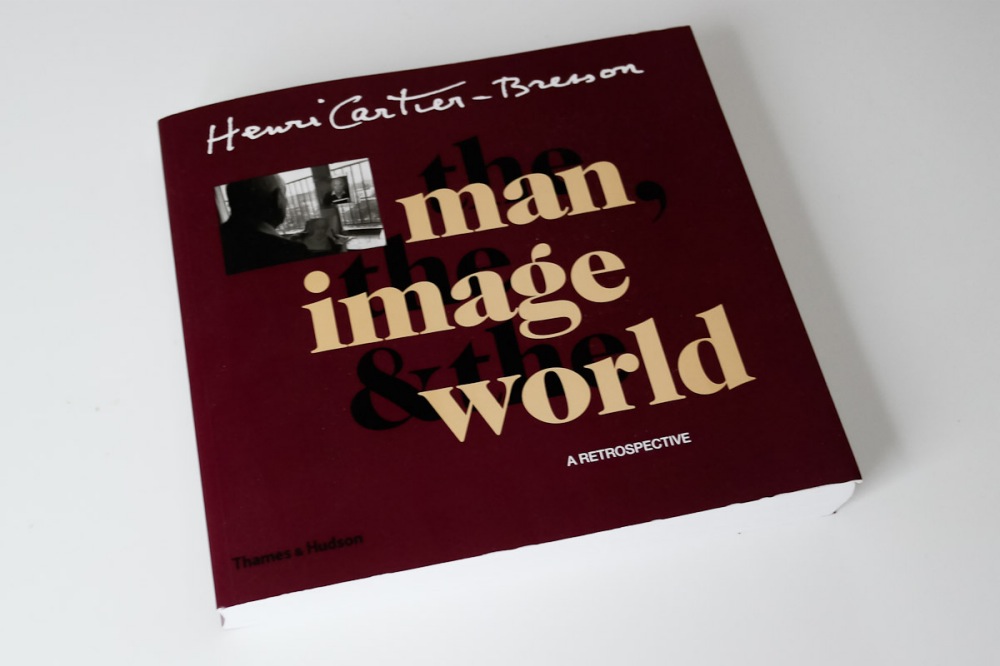Henri Cartier-Bresson – Book review

The man couldn’t take a good color picture. His portrait pictures are, for the most part, eminently forgettable. His street pictures invariably use maximum depth of field and are without exception, humorless. He claimed to be a revolutionary while spending the last thirty years of his life in a multi-million dollar apartment on the Rue de Rivoli overlooking the Tuileries Gardens. He was a rabid self-publicist with over a dozen picture books to his name. And he did his best work over 70 years ago, mostly before 1934, though living into the 21st century.
But wait a minute.
The man jumping the puddle.
The blind boy feeling his way along the wall.
The kid on crutches.
The Gestapo informer.
The monocled man at the bull fight ring.
The Chinese eating from a rice bowl.
The eunuch.
The near-naked man at the wall in Russia.
The couple on the train.
The gored bull.
The French lunch on the banks of the Marne.
The behatted Orson Welles character in Spain against that wild wall of windows.
The beautiful couple in Los Angeles.
Giacometti on the Rue d’Alema in the pelting rain.
And on and on.
Anyone with even a passing familiarity with the work of Henri Cartier-Bresson will easily call to mind the images conjured up by these brief descriptions and it is just that which makes him such a great photographer. His work is memorable. Name another photographer where you can recall so many photographs.
Maybe what makes his very early work the best is the still fresh teachings of the cubist Andre Lhote. Maybe it was a clearer vision in a less cluttered world. Yet what is so amazing about these early pictures is that they were all taken on assignments during his years as a photojournalist. Amazing, because he chose to make beautifully composed and timed images where mere photographic records would have sufficed.
Traveling in then exotic lands like China and India, pretty much anything would have satisfied his editors. But he wanted to do better. Years later, famous and revered, he disclaimed his photojournalist roots and posed as an artist. Later still, he disavowed photography (an interesting negative marketing tactic which cleverly served to make his work all the more famous) while making some of the most banal sketches since the crayon was invented. None of that matters. His life’s work was done.
There is so much we can learn from him. In a digital age where photographers think nothing of banging off hundreds of pictures in the hope one comes out (interestingly a criticism George Bernard-Shaw leveled at early 35mm photographers, when likening them to the fish which lays many eggs trusting one would hatch) it gives you pause when you realize that his picture rate during the 1968 Paris riots, for example, was no more than four per hour. And you can bet his success rate was high.
What made it possible for him to make so many well timed and composed pictures? The invisibility of this gangly, raincoated man is well known. His visage beyond bland, it would be difficult to take note of this faceless man in the street. Recalling that he came to his medium with a well trained eye, what remains a wonder is the timing. Lhote may have taught him to see, but the skill of pre-visualization, knowing the precise moment when all those building blocks would fit just so, that was born not bred. Thus was the Decisive Moment created.
And if there is any quibble to be had with this magnificent book, whose reproductions are beyond reproach, it’s that none of Cartier-Bresson’s contact sheets are included. These bear out just how often he got it dead right, without any need to machine gun his Leica emulating the fish model.
So what of the post-war work? Well, he didn’t “get” America any more than Robert Frank ever did. The images from the New World are replete with overfed Texans, gun toting kids and put-upon blacks. Nowhere is the beauty of America and the boundless generosity of its people on view. But what do you expect? Cartier-Bresson was, after all, French and his great inherited wealth had passed from bourgeois to royal status once he became its inheritor. This gave him license, of course, to mock the nouveau riches, whence he came. Further, the more recent work had lost its edge. With occasional exceptions the acidity of vision is gone. The architectural, nay cubist, compositional sense is no more. Maybe he got bored. Maybe he was no longer hungry. Or maybe fame had done its damage.
No matter. He transformed photography as we know it and is the spiritual father to all photographers. And you can forget all the rot about printing the whole negative and nothing but the whole negative. First I don’t believe it. Second, who cares if the result is good?
As a one volume reprise of his seventy plus years of photography it would be hard to improve on this book, as long as you are prepared to discount the silly, uncritical, gushing essays and HCB’s frightful pencil and charcoal sketches. I use this book as an interesting litmus test at home. Leaving it open on the bar for all to see, I know immediately a guest’s sensibilities when he pauses and turns the pages. Now that is someone with a shared passion.
And just for laughs, depending on whether he got his first Leica in 1932 or 1933 (the text is confused on this) it may just be that that man jumping the puddle wasn’t even taken on a Leica at all. Ha! ha! ha!